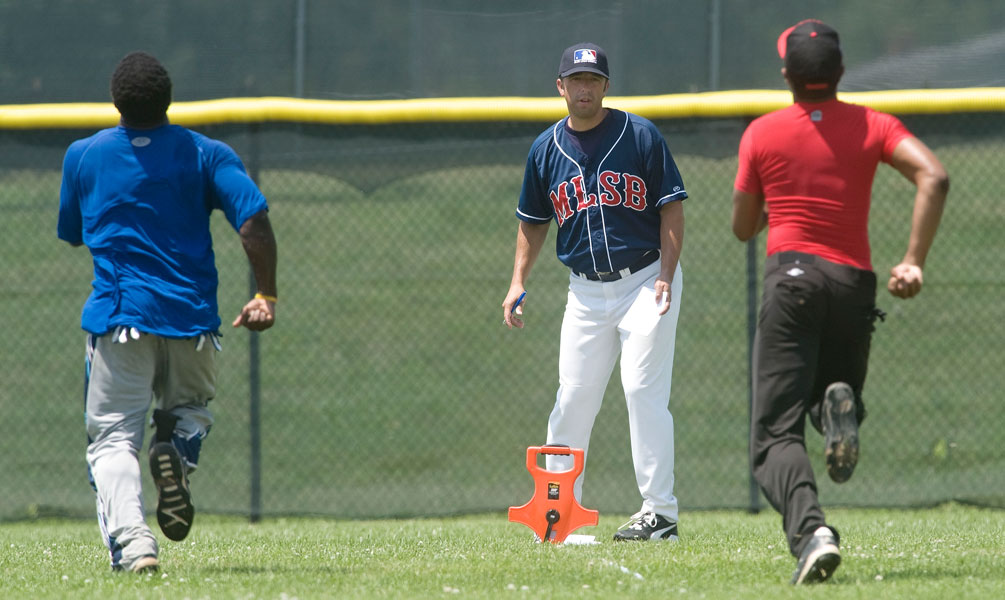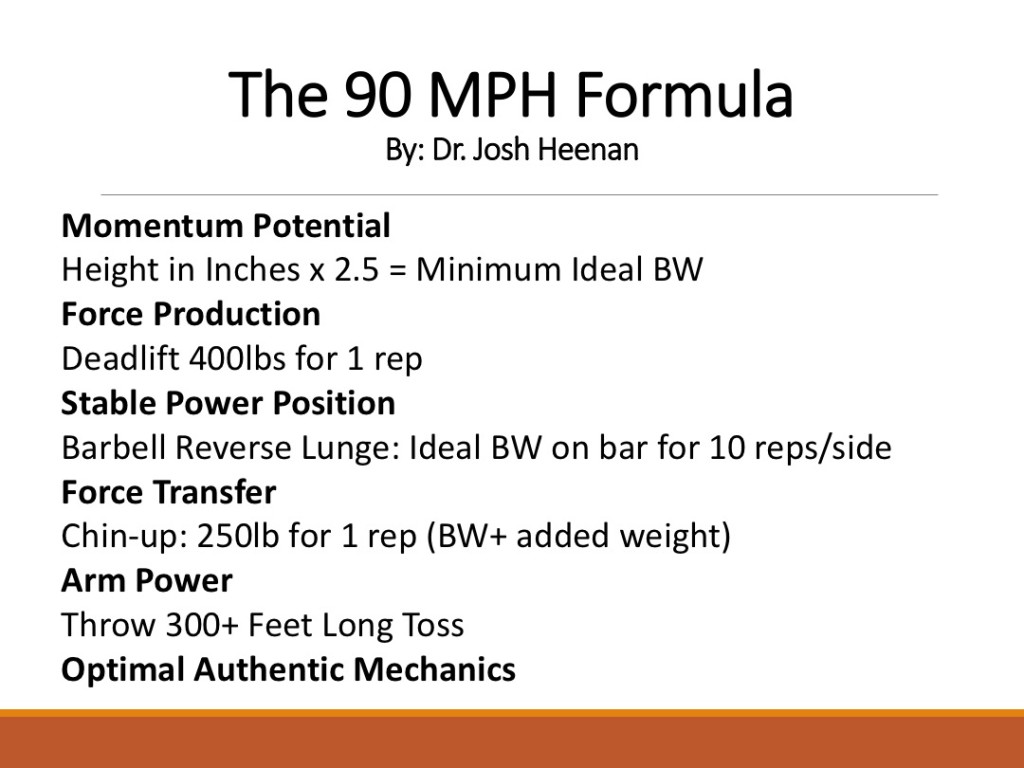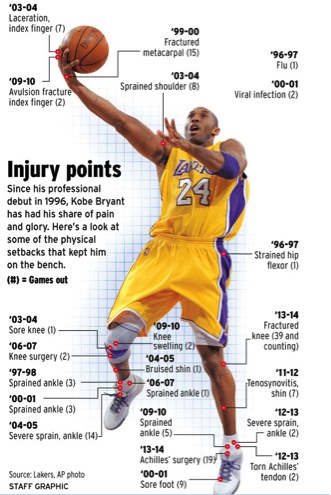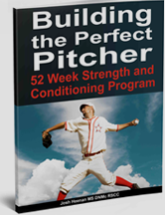Are You Ready For a College Baseball Showcase?

Summer time is almost here and for many high school players wishing to play college baseball this means showcase season. Showcases are a double edge sward. There are some outstanding showcases that allow you the opportunity to interact in with college coaches at schools you have interest in while getting a feel for their personality, skill set, and coaching style (yes, you are interviewing them as much as they are you). On the other end of the spectrum, there are factory style showcases that allow you and 500 other ball players just enough time to take 3 ground balls, 10 swings, and run a 60 all for the camera and then you are done for the day. Not the ideal situation for most.
I like to remind my athletes that a showcase is a job interview. A part of getting the job is absolutely how well you perform, but do you look the part? How well do you interact with the other players? What are your interactions with coaches? Do you look like you are having fun? Remember coaches are looking for people they want to have apart of their baseball family for 20-60 hours a week for 4-5 years!
ARE YOU READY FOR A SHOWCASE?
- Have you done skill work for baseball at least 2x per week outside of practice?Realize that practice is just the beginning. Routinely, our college guys take swings from 8-10pm on a Friday night. If you are not working on your skills while your competition is out partying on a regular basis you rarely have a leg up on them.
- Have you trained in the weight room at least 2x per week for the last 3-months?
If not, you are at a distinct disadvantage in regards to athletic potential and injury prevention. I believe for an athlete to even bother to go to a showcase he should have a solid 3-6 months minimum of organized training under their belt. If you don’t enjoy the process of getting better and training, you will likily not make a great college player.Check out this day in the life of a college baseball player article https://www.theodysseyonline.com/college-baseball-the-16-hour-day
- Have you recently taken a video of your 60-yard dash?I can’t tell you how many athletes tell me they run a 6.8-7.0 60-yard dash and when I ask them for a video of it they can only produce a video of them running an 8.2. Video does not lie. Get over the fact that you are not fast and figure out how to fix it.Unless you are a pitcher that throws mid 80s+ MPH or skill position guy that can legit hit the ball 400 feet, I would not recommend showing off your “skills” unless you run below a 7.5 60-yard dash.
- Have you recently taken a video of yourself… pitching, fielding, hitting?Pitchers —get on video with multiple shots at different angles— and at least one behind the backstop with a radar gun in view.Hitters —get a few views of you swinging and fielding/throwing.For all position, be honest with yourself. How athletic do you look? What do your mechanics and movements look like compared to the MLB version of you? Adjust accordingly.
- What’s your GPA?We all hear stories of guys who throw 90 MPH and rock a 2.0 GPA and he got a college scholarship, but let’s face it, you are probably not that guy— and that story was probably fabricated.Just like point #3, unless you are a pitcher throws mid 80s+ MPH or skill position guy that can legit hit the ball 400 feet, I would skip the showcase if your GPA is under a 2.5. Do yourself a favor and take summer classes to bring your GPA to that 3.0 range.Don’t think it really matters? Ask any DI program what their minimum team GPA and SAT scores need to be.
- Do you look the part?Coaches will say that looking the part is not that important as they are looking more for the skill and potential of the player but in my experience, this is incorrect. In fact, I often hear coaches state things like “look at that guy, he has obviously put in the work in the weight room” or “this kid swings well, but he needs to figure out where the kitchen is”.
 My 90 MPH formula for pitchers gives a guideline on weight I like to see our pitchers at. It get’s a little trickier for position players, but as a general rule, take your height in inches and multiple it by 2.5 and that is a good baseline for most athletes to start “looking the part”.
My 90 MPH formula for pitchers gives a guideline on weight I like to see our pitchers at. It get’s a little trickier for position players, but as a general rule, take your height in inches and multiple it by 2.5 and that is a good baseline for most athletes to start “looking the part”.
What other aspects do you think are important at your showcase? Where do you think you are lacking the most?
Leave your feedback below in the comments and I will gladly reply.
Random Thoughts – Baseball Preseason Training
With spring sports about to formally start in a few weeks, emails have been pouring in. Here is a collection of thoughts from the past week.
Training has a very profound effect on an athlete’s performance
Unfortunately, like many things in life, it takes some time to get the ball rolling and reap the full benefits of training. Do we often see outstanding results in movement, strength, and performance in a short time? Absolutely. But if you think you are going to drop .2 sec off his 60 or 40-yard dash by next week’s showcase, you are missing the point of athletic development. Skill, speed, strength, and athletic development does not happen overnight; it’s a process.
Risk can be minimized
I am not a Basketball fan per se. I am however a huge fan of the qualities that a great basketball player has—hand eye coordination, great shin angles, speed, power, and endurance to name a few.
For baseball players, I can’t think of too many things with a higher risk-reward ratio than recreational/pick-up basketball. As my readers know, I am all for playing multiple sports, especially when younger, but the rate at which broken/sprained ankles, fingers, or wrists for kids “just trying to get some conditioning in” makes playing basketball not worth it unless you really love the game. With the short twenty-game New England high school baseball season, one good ankle sprain or jammed finger could mean missing half of your season.
In fact, after my 1st full season as Sacred Heart University’s Baseball Strength Coach, we forbid our players from playing basketball. Instead, I encouraged tag, dodgeball variations (not using dominant arm), and touch football.

Speed changes everything.
Rarely do you see a kid who consistently throws in the low 70s have arm pain.
Rarely do you see a kid who consistently runs an 8.0 60 yard dash pull their hamstring bad enough where they miss more than a week of their season.
Athletes and coaches need to understand how to progress throwing and speed work to mitigate short and long-term injuries. It is very difficult to have only 2-3 weeks of preseason with your team, as coaches need to make cuts and figure out whom the best players are.
Want a trick to incorporate speed and conditioning work without subjecting athletes to unneeded hamstring pulls?
Hill Sprints
Why hill sprints?
With the incline of the hill you are forcing your body into good acceleration positions, without subjecting yourself to the faster velocity required in flat ground sprints. The accelerated position also prevents over-striding and over-using the hamstrings to pull you forward (no heel landing). You want to be accelerating by pushing the ground behind you, instead of pulling you forward. So, hill sprints self corrects and teaches near optimal running mechanics without having to think about it. Hill sprints are also much more anaerobic in nature which is very applicable for baseball players. Especially the weaker, slower ones!
How do you implement this?
Week 1- Tryouts:
Start with your normal baseball skill work, but everyday at the end of practice find a steep hill and have players (pitchers included!) sprint for 20 seconds up the hill and walk back down. This can be a safe grassy hill or a pavement hill. Do 6-10 rounds of this with 2-5 minutes of recovery between sprints. Record where each player ends at the end of 20 seconds. Very quickly you will know who is “in good shape” and who is powerful and athletic. Not to mention you are avoiding god-awful distance running.
Week 2- Normal Practices:
M/W/F do 6-10 sets of 20 second hill sprints with near full recovery.
Tu/Th do 6-10 sets of 10-20 yard dashes on flat ground ~80% (full recovery in-between sets)
Week 3- Normal Practices:
M/W/F do 6-10 sets of 10-20 yard dashes on flat ground ~90% (full recovery in-between sets)
Tu/Th do 4-6 sets of 20 second hill sprints with near full recovery.
Obviously, if athletes were properly trained going into the season the coaches wouldn’t have to worry about this as much, but this is a safe way to protect the athletes and prepare them effectively.
Dear MLB Draft Class of 2013
Dear MLB Draft Class of 2013,
Congratulations! The countless hours of hard work playing a game you love are about to pay off on draft day. Less than 0.5% of high school baseball players ever get the opportunity to play professionally, so enjoy this moment!
Having worked with many professional ballplayers at many levels in leagues all across the country, I have compiled some tips to help you maximize your career in the pros.
-
Treat Your Body Well
You are only given one body and your healthy body is your livelihood in this occupation. You must be your own biggest advocate.Find the best network of strength coaches, position coaches, chiros, PTs, Ophthalmologist, Primary Care Physicians, and Orthopedists. Problems will arise during your career, so have a team of advocates for you in multiple disciplines.
-
Don’t Eat Like Shit
Long days and little sleep, coupled with the lack of funds and options for quality food can really wreak havoc on your body. It is well known that the US is in the midst of an obesity epidemic; this was not caused by lack of food, but by a lack of nutritious food.Learn what healthy is and learn how to cook. These changes alone can prolong your career and help you recover more efficiently.
When it comes to alcohol consumption for my college and pro guys, I advise them to minimize intake and limit it to one day a week. You are now a professional, you get paid to prepare well and perform like one. Act the part.
-
Become a Student of the Game
As in many other professions, you will be left behind if you don’t take the time to learn about your craft.Read about differences in how the game is played from different coaches. Ask questions of people who are smarter than you or have more experience. Watch video to help refine your mechanics. Keep records of outings and see how you can make improvements.
Many of you will be lucky to have very knowledgeable teammates and coaches — use them. Find mentors who have experience and perspective, and apply what you learn to elevate your game.
-
Find Other Passions
Immersing yourself in your career is a necessity if you want to reach the highest levels, but it can also lead to burn out very quickly.I have worked with athletes who have found alternative passions in art, investing, law, meditation, music, web design, and writing.
Find a constructive way to decompress between the long hours that pro ball requires.
-
Someone is Always Watching
Like it or not, someone is always watching. Learn to embrace it.On the field, screaming at umpires on every questionable call or being rude to fans after you have a tough day is not needed. Off the field, people love to pick out athletes doing things they should not be doing. You will make headlines and that is the last thing your organization wants.
You could be Matt Kemp.
Or you could be Arod.
Go viral, but for positive reasons.
-
Monitor Your Finances
I am no accountant, but I have seen many professional players drown in financial issues.Do yourself a favor:
-Watch the ESPN 30 for 30 special “Broke”
-Sign up for www.mint.com to monitor your spending -
Must Reads
I hope this post reaches many of this year and future draft picks. If you have a suggestion for new professional athletes please comment below.
Happy Super Bowl Sunday!
Forward to 3:25 and see why the Saint are hours away from their 1st Super Bowl Championship.
Enjoy your day!













